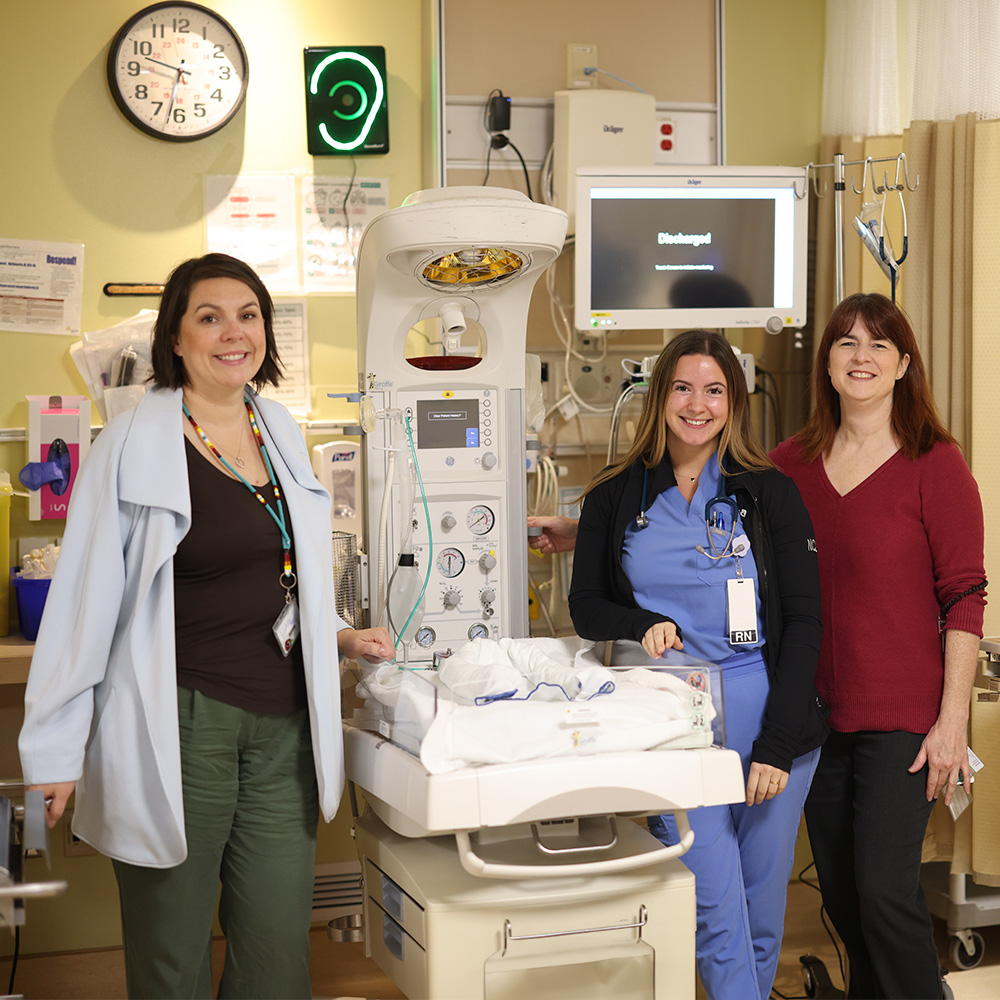Giving Tuesday donations fund NICU equipment upgrades
by Katie Nicholls
 From L-R: Marta Nesti, RN, NICU; Brianne Belanger, RN, NICU; Amy Halvorsen, Manager, Paediatrics & Paediatric Outpatient.
From L-R: Marta Nesti, RN, NICU; Brianne Belanger, RN, NICU; Amy Halvorsen, Manager, Paediatrics & Paediatric Outpatient.(Via Tbnewswatch.com)
A new infant warmer is coming to the Thunder Bay Regional Health Sciences Centre’s neonatal intensive care unit thanks to Giving Tuesday donations.
Newborns at the hospital needing extra medical care will have new equipment available to them courtesy of donations made on Giving Tuesday.
The Thunder Bay Regional Health Sciences Centre will be purchasing a new NICU Giraffe Infant Warmer after a fundraising goal of $50,000 was met last week, thanks to many generous donors. This included the Thunder Bay Regional Health Sciences Foundation providing $10,000 from its Giving Tuesday Goal to help the fundraiser meet its target.
Marta Nesti, is a registered nurse in the neonatal unit at the regional hospital, said updated equipment is vital in providing care.
“The infant warmer keeps the baby warm while we’re able to do some procedures like x-rays, examinations, intubations, lumbar punctures. It keeps the baby warm [and is a] really key component of it,” Nesti said.
She indicated that the new warmer will have a resuscitation panel built into it, which will allow staff to easily see and assess a baby’s vital signs as well as provide portability by being attached directly to the machine instead of being mounted on the wall.
“The technology we have in these newer warmers is critical to saving the lives of preemies and infants, especially during their first hour of life,” said Nesti.
The new machine will also feature clear sides for ease of physical and visual access for medical staff and families. The warmer is height adjustable for when a baby undergoing medical treatments or for when a birth parent is spending time with them at their bedside.
“It is so important for the NICU to have the right equipment for the short and long-term health of the child,” Nesti added.
The new infant warmer will be replacing an older version, which will reach its end of life by 2025. The hospital aims to replace critical equipment every 10 years.